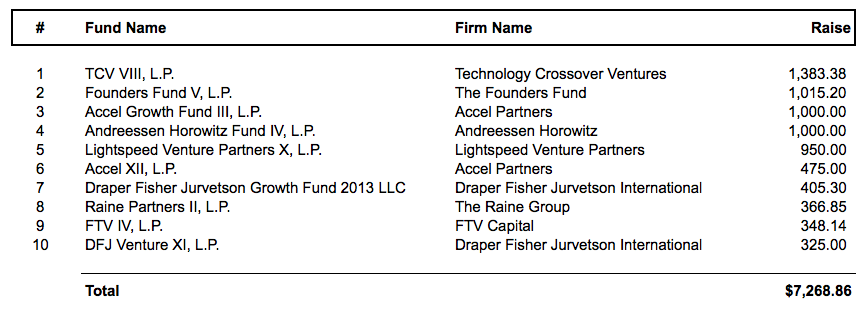by lilibalfour | | think
It is true that there are fewer women getting funded and building billion dollar companies. The numbers are improving, yet we still have a long way to go. The answer to this problem is to start early and to focus on the internal factors causing this imbalance.
“What’s holding you back is the thought that something is holding you back.” Ralph Marston
I was raised with four siblings. I am the only one who graduated from high school. I later went on to college to study finance and today I run a financial advisory firm that helps early-stage companies get funded. The only difference between my siblings and me is I decided to follow a different path. My internal message set me on that path.
Nobody claims being a pioneer is easy but it is always worth it. With each victory, I am able to find strength to climb higher. I fall. I make mistakes. Yet each mistake I make helps me to learn more about myself and to grow. My internal message is that failure is part of the process. I don’t worry about failing. I worry about stagnating.
It’s Not About My Gender
In my 20’s, I worked in technology M&A. I was the only female on my team and the only team member who did not have both a degree in electrical engineering and an MBA. I struggled to keep up with my peers. I constantly complained to friends that I was being treated differently because I was female. Today, I can see that I struggled because I did not have the same knowledge as my team members. My work was not always up to par because I lacked a solid background in technology. This explains why I was treated differently.
When we get honest, we get better. I gain nothing by blaming my gender. When I look at my own deficiencies, I am empowered to improve my skills. I still don’t have an electrical engineering degree. I don’t code. I don’t consider myself to be tech savvy. Yet, I take the time to understand technology well enough to do my work. Nobody is holding me back from learning. Nobody.
Telling Your Financial Story
If you are building a company, you need to understand the numbers. I know that is not always easy to do. A female engineer once said, “When I see a dollar sign in front of a number I panic.” Calculus was easy for her, but finance was hard. Her internal message was that finance was difficult.
When you understand how money is coming in and out of your company, you increase your chances of success. If you can understand basic addition and subtraction, you can understand your company’s income statement.
Tell Investors What They Want to Hear
When you talk to investors in the language they want to hear, you increase your chances of getting funded. Investors will invest when you show them you know how to make money.
Do you know your revenue metrics? If you are in the retail business, you want to track your sales per square foot (SPSF). A company like Gap will see $300 in SPSF while a company like Warby Parker will see well over $3,000 in SPSF. If you are operating an online business, you want to know your average revenue per user (ARPU). Amazon has $500 in ARPU while Facebook only has $5.
Once you’ve determined your revenue metrics, you can measure against your peers. Are you outpacing your peer group? If you’re not, find out how you can improve your numbers.
Remember: Investors are investing for financial return. They want to know how your company is going to make money and a return.
Taking My Own Medicine
I don’t believe building a billion dollar business is easy. In fact, a friend and I recently started a support group called Billionaire Babes. We realized we both needed help in growing our companies. We get together to discuss revenue generation for our respective companies and to hone in on our weaknesses. My goal is to build a billion dollar company in the next five years. In order to do that, I need to work on my internal messaging by rewiring my brain.
If you are not already in a similar group, I strongly suggest you form one. Women have an entirely different internal message about money. We were not raised to think about making money. We were not taught about wealth creation. The good news: Nobody is holding us back from learning. Nobody.
by lilibalfour | | think
How Entrepreneurs Can Raise Capital With Ease
The future looks bright for early-stage companies seeking capital as we prepare to celebrate the one-year anniversary of the JOBS Act – Title I.
Emerging growth companies (defined as a company with total annual gross revenues of less than $1 billion during its most recently completed fiscal year) have enjoyed relaxed requirements around fund raising in the public market. Title I allows companies to submit only two years of audited financial statements, report as a Smaller Reporting Company, and avoid the standard requirement for Sarbanes-Oxley Act. In addition, companies seeking to raise capital from the public market can now submit a confidential S-1 in an effort to test the waters. This allows companies to receive feedback from the SEC prior to committing to a formal initial public offering (IPO).
During the 12-month period from September 15 2013 to September 15, 2014, approximately 370 companies filed to go public. In contrast, only 256 companies filed to go public in the calendar year of 2013.
For early-stage companies attempting to raise capital from the private markets, Title I allows for less regulation around general solicitation and advertising of privately held securities. In simple terms, it allows entrepreneurs the ability to publicly advertise their fund raising efforts. The main caveat is investors must be accredited and entrepreneurs are required by law to ensure investor accreditation by reviewing credit reports, tax filings, and bank statements.
Entrepreneurs can alleviate the verification burden by utilizing fund raising platforms, which verify investor accreditation free of charge. The pioneer in fund raising platforms, AngelList, was founded in early 2010 and to date has facilitated over $200 million in investments.
Syndicates Streamline the Process
At the end of 2013, AngelList announced a Syndicate Program, allowing angel investors to raise committed capital for future investments. This program enhanced entrepreneurs’ ability to target seasoned investors with solid track records. Today, the top syndicate, Gil Penchina, has raised close to $4,500,000 to back promising entrepreneurs.
Pooled capital makes fund raising easier for entrepreneurs who previously needed to reach out to several dozen investors before getting a lead or anchor investor. Entrepreneurs can now focus on syndicates the same way they focus on venture capital funds.
Fund Raising Ecosystem
There are other public platforms available. Second to AngelList is Onevest (a merger of RockThePost and CoFoundersLab), which is backed by Shark Tank’s Barbara Corcoran. RockThePost was founded in late 2011 and to date has facilitated over $90 million in investments. The main difference between AngelList and Onevest is the former is investor focused. On Onevest, entrepreneurs cannot view investor profiles and determine which investor would be the best match for his or her company. However, RockThePost offers educational events for both investors and entrepreneurs.
The Key to Accessing Capital Quick
Investors put their money into companies that have traction. This traction may be in the form of revenue, customers, or simple investor interest. Entrepreneurs should study the investor landscape, secure a lead or anchor investor, and then display their company’s profile publicly.
The world of finance is flattening. It has never been a better time for early-stage companies to raise capital. With SEC relaxing requirements and technology bringing people together, entrepreneurs are raising capital with ease.
by lilibalfour | | think
The Top 10 US-based venture capital funds, based on amount of capital raised during the first quarter of 2014, pulled in $7.3 billion over 8 venture capital firms. Accel Partners and Draper Fisher Jurvetson each raised two funds. When it rains it pours.
The first quarter of 2014 was a record breaking quarter and serves as promise that venture capital, as an asset class, is on the ascend. The amount of capital raised in the fourth quarter was up 81% from the fourth quarter of 2013 and up over 100% from the first quarter of 2013. Moreover, the first quarter of 2014 marks the strongest quarter for venture capital fundraising since the fourth quarter of 2007, when $10.4 billion was raised.
Technology Crossover Ventures raised the largest amount of capital at $1,383,380,000 as of March 31, 2014, with a $2,500,000,000 overall target. Second place went to The Founders Fund, while Accel Partners and Andreesen Horowitz shared third place.
All numbers as of March 31, 2014.

The California Gold Rush
California continues its reign as the venture capital state. In fact, all funds in the top 10 are based in California, with the exception of The Raine Group, which is based in New York. Raine garnered the number 8 spot by raising $366,850,000 for its second fund. Coincidentally, Raine counts Marc Andreessen of Andreesen Horowitz as an advisory board member. It looks like his magic may be contagious.
Where is the Money Going?
While the majority of the funds are focused on traditional venture-backed industries — internet, infrastructure, financial services, and software – The Founders Fund has added aerospace and machine intelligence, while Raine is focused on entertainment, media, sports, and lifestyle. Nonetheless, software continues to be the most highly funded sector as we move into a frothy venture capital market.
Strike While the Iron is Hot
There has never been a better time to raise capital. The past two years have been plagued by talk of a Series A crunch leaving entrepreneurs nervous about their future. Finally, it appears the drought is over and entrepreneurs will begin to see the light at the end of the tunnel.
Are you raising capital this year? How optimistic are you about the market?
by lilibalfour | | think
Where Have All the Innovators Gone?
Growing up in Silicon Valley was a magical experience. The area was full of innovators who came to this country to build their dreams, which were built on ideas that served a real purpose. From 1939, when Hewlett Packard developed their first audio oscillator in a garage, to 1942 when the greatest minds pooled their resources together to support the defense industry heading into World War II, the brightest minds were attracted to building technology that would change the world.
By 1971, due to the growing number of semiconductor innovations, the region began to be referred to as Silicon Valley. Fast forward to 2014 and the landscape has been watered down by novelty apps, news aggregators, and get-rich-quick copycat companies. If we had to name this same region today, what would we name it?
I hope the world would recognize this region as an innovation hub for electric cars and electric health records, yet sadly we are known for social networking and sleek devices produced with slave labor.
HBO’s comedic take on Silicon Valley is the wake up call this region needs. We will laugh. We will reflect. And hopefully we will grow.
I hope our growth brings talented people to focus on innovations that protect the environment, eradicate disease, and improve overall health for all of the world’s people.

The Negative Effects
Some of the negative effects of the current landscape are innocuous, while others are life threatening. We have 20 year olds flocking to the region to build upon outdated and frivolous ideas. They may waste their time on a company that goes nowhere, but they earn valuable experience in the process. The most disturbing side effect is that real problems are going unsolved. Whether it be cybersecurity or treatments for cancer, there is a real need for talented people to focus on real innovation.
Are you tuning into the HBO comedy, Silicon Valley? Do you think it will have a negative or positive effect on innovation?

by lilibalfour | | think
As with any form of monetary solicitation, crowdfunding has its perils and setbacks. Let’s walk through the three deadly mistakes entrepreneurs make with crowdfunding.
Not Explaining Equity When Oculus was acquired by Facebook for $2 billion, their 9,522 Kickstarter backers were upset to learn they did not get a portion of the proceeds. After all, they invested $2,437,429 to catapult the idea into existence. However, Kickstarter is not authorized to facilitate equity for cash transactions. Unbeknownst to them, all 9,522 backers were simply participating in the pre-sale of a product. Providing a simple disclaimer on the campaign page letting backers of the campaign know the campaign was not an offer to purchase securities could have easily thwarted this situation.
Not Creating a Financial Budget Seth Quest, the designer of Hanfree, offered to build an iPad stand for $50, based on what he believed the product would cost. Creating a product for the first time requires design, manufacturing, packaging, and distribution. Seth later learned that the $35,000 that he raised from the campaign would not cover the full costs of creating the product. Most backers were sympathetic. Nevertheless, it only took one irate backer to demand his money back and set the course for a personal bankruptcy filing. When you create a financial budget backed by solid research, your chances of delivering on your promise increases. Make sure you understand all costs associated with production and distribution to avoid any surprises.
Not Building a Roadmap Soma water filter was elated when they raised $100,000 in 10 days and finished their 30-day campaign with close to 150% of their funding goal. The one thing they were not ahead of schedule on was certification. Their NSF certification lagged and formerly enthusiastic backers became disgruntled customers. It is one thing to understand how to get your product to your customers, but you must also understand all regulations and compliance issues that may stall your project. Research the entire production cycle to understand the steps needed to be in compliance. It is critical to understand all aspects of getting your product from idea stage into your customers’ hands. Are you thinking of launching a crowdfunding campaign? Check out How to Crowd Fund a Million Dollars.

by lilibalfour | | think
The world of fundraising has been turned on its head. A decade ago, entrepreneurs had limited sources for capital — angel investors, venture capital funds, and rich Uncles. Today, entrepreneurs have a plethora of options.
AngelList pioneered online funding platforms, which spawned dozens of similar offerings to make meeting angel investors easier. Kickstarter and Indiegogo were the first to make raising pre-sale dollars on your brilliant idea a reality.
To date, over $1,000,000,000 has been pledged to Kickstarter projects, with the average project receiving approximately $20,000; enough to seed the initial stages of most ideas. Indiegogo doesn’t report up-to-date numbers, but based on historical data one could extrapolate that close to $200,000,000 has been pledged. It is projected that a total of $5,000,000,000 will be pledged across all crowd funding platforms in 2014.
Enough data has been collected over the past five years to establish best practices for crowd funding campaigns. I recently developed a course that teaches entrepreneurs the three key aspects of raising capital on a crowd funding platform. You can view it here for free.
Contact List
Raising capital on crowd funding is a function of who you know and the good news is that you can meet nearly anyone using social media. Ask Stacy Ferriera, who at 18 years of age secured an investment from Richard Branson by tweeting him on Twitter.
Entrepreneurs are using social media to get the attention of influencers who can move mountains.
Messaging
The key to crowd funding is weaving a compelling story through video, images, and text. The most successful campaigns use video to highlight the people behind the campaigns and display the passion behind the project. It helps if your campaign is solving a real problem that people care about, such as home security.
Entrepreneurs who provide a passionate solution to a real problem increase their chances of success.
Campaign Management
Campaign management is the aspect that most entrepreneurs fail to prepare for during their campaign. It is easy to focus on the launch, but many grow tired of campaigning by day 10. The key is to develop a 30-day plan ahead of time and recruit others (interns, virtual assistants, etc.) to carry the load.
Entrepreneurs who understand it is a marathon, not a sprint, are best equipped to meet their funding goal.
Have you tried crowd funding? What are some of the technics that helped you get across the finish line? Let me know in the comments.




